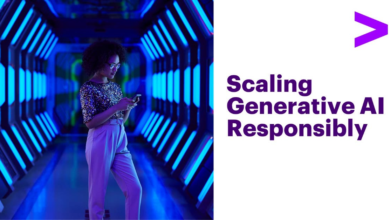Knowledge ‘24 – ServiceNow brings new generative AI capabilities to its ‘platform of platforms’

ServiceNow today announced the expansion of new generative AI capabilities across the Now platform at its annual Knowledge event in Las Vegas, with the aim of simplifying work for employees in the enterprise. The workflow vendor has long promoted its ‘platform of platforms’ approach, integrating into systems of record, providing an enterprise-wide engagement layer for employees to carry out tasks, without having to switch between multiple applications. With the introduction of generative AI capabilities, ServiceNow CEO Bill McDermott believes that further simplicity can be achieved and that there are huge efficiencies to be gained.
During the opening keynote today, McDermott enthusiastically said:
Why are we here? Because ladies and gentlemen, in every business, in every industry across the world, every single business process, every single workflow, will be re-engineered with generative AI. This is a renaissance in the information technology industry. It’s a once in a generation moment. And you are the leaders that get to move us forward.
Product updates
This time last year ServiceNow was making its early announcements regarding a partnership with NVIDIA and was talking about how it saw generative AI impacting enterprise workflows. This was followed by the introduction of its Now Assist tool – a conversational interface that can summarize information, carry out tasks, help build low-code apps, and automate workflows for business areas that include IT, HR and customer service.
Today the vendor announced an expansion of its generative AI capabilities, including a bring your own (BYO) model option that will now be available in all Now Assist portfolios. Customers will be able to use ServiceNow’s models, general purpose LLMs or introduce their own models into the platform.
In addition to this, a range of product updates were launched, including:
- Now Assist for Strategic Portfolio Management (SPM) – which will allow employees to bring customer feedback and requests all into one place, with the aim of reducing response times and allowing organizations to respond more quickly to evolving needs. Now Assist for SPM will include a conversational experience for demand creation, which will include the use of natural language processing capabilities to create and modify demands.
- Prompt management – initially available in Now Assist for ITSM, administrators will be able to configure the Now Assist experience for agents with a new point and click interface (no coding required). Out of the box prompts will be available, with indicators to the most important information, based on specific business context.
- Service Catalog item generation – available in Now Assist for Creator, generative AI will be used to create catalog items based on natural language, with the aim of allowing developers to generate a short description, and a set of questions, using text prompts.
- Playbook generation – also available in Now Assist for Creator, process workers, owners, and analysts can generate workflow playbooks using generative AI. Using natural language prompts, ServiceNow claims users can quickly create workflow playbooks to define consistent, repeatable and auditable processes.
- Knowledge article generation – available in Now Assist for ITSM, CSM and HR Service Delivery, generative AI will automatically draft knowledge articles based on incident/case records and work notes.
- Post call summarization – available in Now Assist for CSM, generative AI will summarize voice call transcripts when a call ends, freeing up time for agents.
- Feedback summarization – available in Now Assist for SPM, generative AI will analyze and distil customers’ comments and requests so that product managers can more quickly identify and address priorities.
- Alert group simplification – part of Now Assist for ITOM AIOps, IT teams will get alerts based on AI identifying patterns between incidents, providing a contextual picture of what’s happening across systems and infrastructure.
As you can see from the above, the vendor is coming in thick and fast with its generative AI product updates (much like most other enterprise vendors in the market). The range is vast here though, given that ServiceNow is a platform that spans the enterprise and there are lots of options for it to pursue.
McDermott acknowledged this and said during his keynote that the priority is to introduce simplicity to enterprise processes. He said:
Think about AI. So much complexity. So many voices, bots, co -pilots, etc. How do we get to ‘simple’ and put AI to work for people? Here’s how. We can reduce the chaos to the lowest common denominator.
ServiceNow is the platform for business transformation. It’s one pane of glass, one experience layer and one automation layer with your company. This one system of action can put AI in every corner of your business. That’s why we’re here in Las Vegas, because we have a once in a lifetime shot to be the bridge simplifiers and do what others couldn’t do…for some reason they chose not to do, or architecturally couldn’t handle it…but we can.
We have a financial system at ServiceNow. We have a HR system in ServiceNow. We actually have a CRM system at ServiceNow. And we have 24,000 employees that don’t know it, because we run the whole company on one platform.
The impact on job roles
During the keynote, McDermott also addressed any concern in the room regarding the impact on jobs. There’s no denying that AI is going to fundamentally change the nature of our work, particularly for workers that spend time carrying out process-based tasks. However, the ServiceNow CEO pointed to a Time Magazine article that came out in 1966, which he said claimed that with the advent of computers, 90% of jobs would disappear, that senior executives would be the only ones left with any work and that the state would have to subsidise employees. Commenting on the parallels to now, McDermott said:
Don’t worry about that, 90 million jobs later, just in the United States alone, technology is transforming the global economy and we’re just getting started. This particular moment is a global renaissance of innovation. We’re on the cusp of something really, really big.
And he went on to argue that generative AI will introduce more time for workers to spend time on work that matters. McDermott said:
Five years ago, it was clear that every business had a digital transformation mandate. That’s what we talked about. And you know why we did? Because there are too many systems. It’s complete chaos out there.
The processes were broken, the experiences were terrible. People were dealing with soul crushing work. That’s why they don’t want to come to the office, because when they do, they have to swivel-chair between 13 different applications on average per day. And it soaks up 30% of their productivity.
Why would they want to deal with that environment? And that’s why you gave them the choice.They finally have a choice to have one single pane of glass, to have one experience layer above all the other systems, that make those systems better.
I call this the platform of platforms. And we made a lot of progress together. This gave us a system of action to automate any workflow, in every business, in all the industries out there. And now you are in a position to go on this business transformation journey.
My take
Plenty to digest on day one and this is just a starter for a deeper dive throughout the week. We sat down with McDermott today and will be writing up an analysis of his thoughts tomorrow, which will be followed by customer stories later on in the week. What’s been clear from the Knowledge so far though is that customers are keen to understand how they can further automate their processes, beyond what they’ve been able to achieve to date. I’ve attended multiple sessions today where the dialogue has been engaged and there is certainly enthusiasm for using generative AI. The question appears to be less about ‘if?’, and more about ‘how and when?’. More to follow in the coming days on diginomica.



